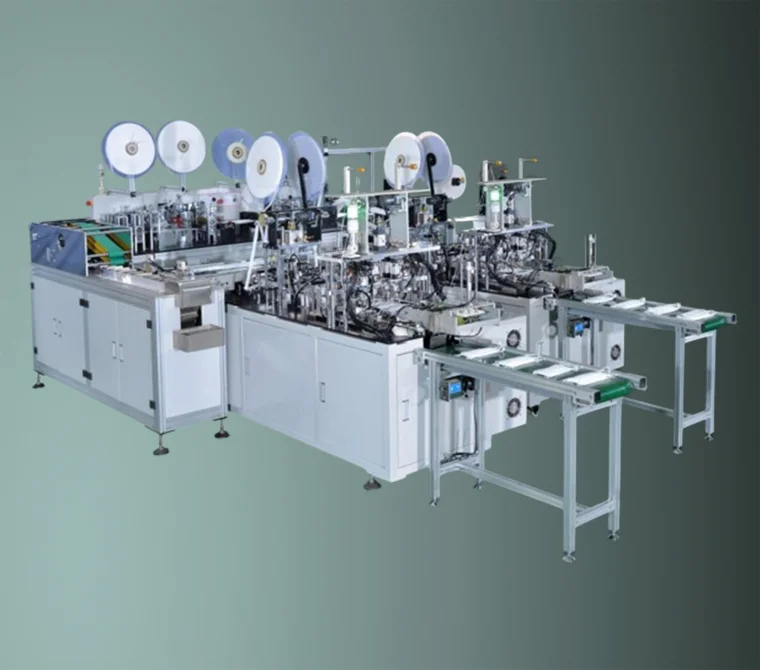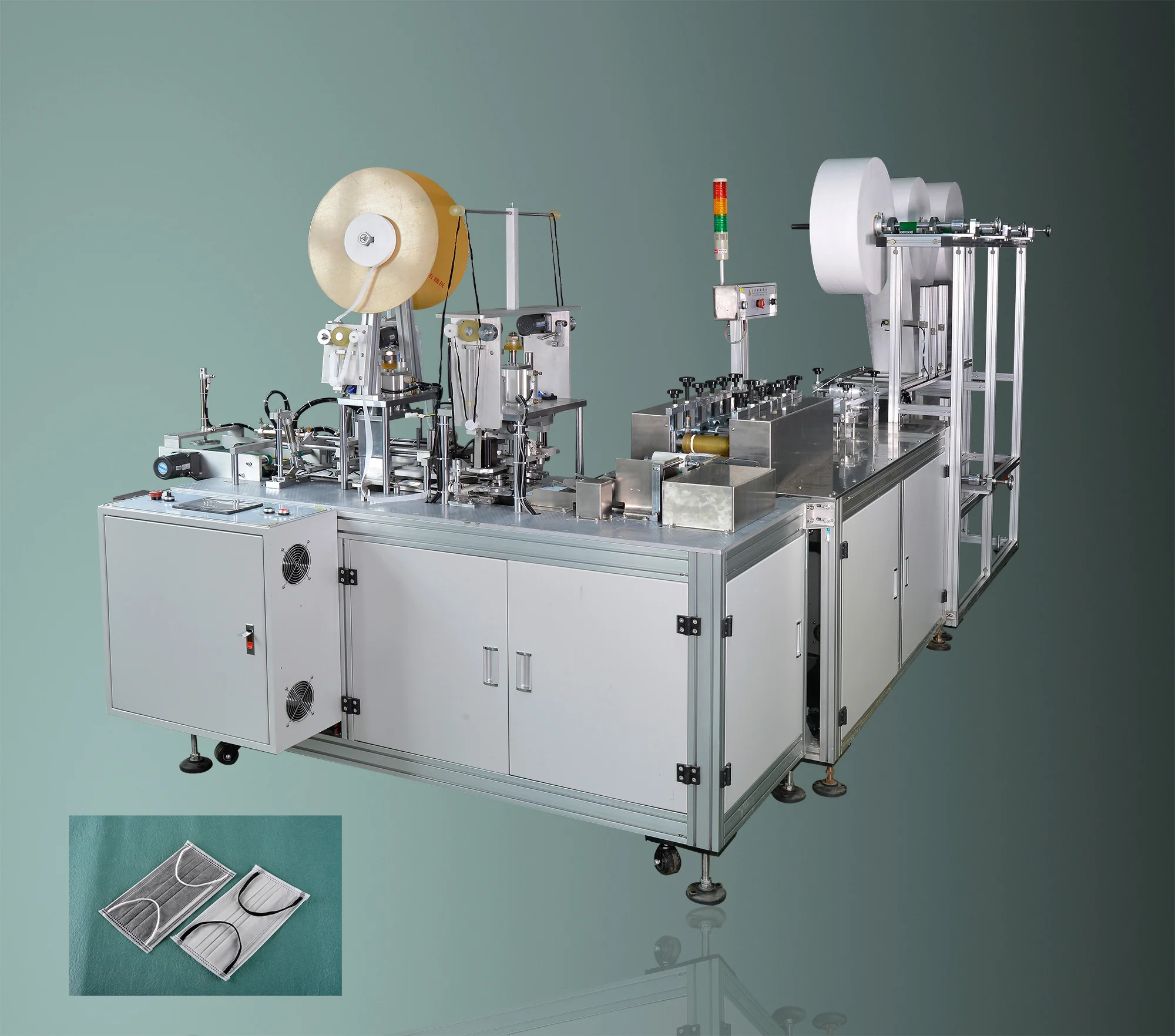How to Maintain and Troubleshoot Flat Mask Making Machines Efficiently
Flat mask making machines have become essential manufacturing tools in the healthcare and personal protective equipment (PPE) industries, particularly in the wake of global health crises. These machines are responsible for the high-speed, automated production of disposable surgical and medical masks, ensuring both safety and supply chain reliability.
However, like all high-precision automated systems, flat mask making machines require routine maintenance and efficient troubleshooting to ensure optimal performance, avoid costly downtime, and extend machine lifespan.
This is where companies like Broadfair Automation Equipment Co., Ltd. shine. As a high-tech enterprise integrating R&D, production, and sales, Broadfair has developed a reputation for delivering advanced, reliable mask production equipment along with strong technical support and after-sales service. Their expertise offers invaluable insights into maintaining and troubleshooting these complex systems.
Understanding the Structure of a Flat Mask Making Machine
To effectively maintain and troubleshoot a flat mask machine, it’s essential to understand its core components:
Material Feeding Unit – Handles the automatic unwinding and feeding of fabric layers.
Nose Wire Insertion System – Inserts and positions the metal nose strip.
Ultrasonic Welding Unit – Bonds layers together using ultrasonic technology.
Ear Loop Welding Section – Attaches ear loops via ultrasonic welding or hot pressing.
Cutting and Stacking System – Cuts the masks to size and stacks them automatically.
Each part must function in coordination for the machine to operate smoothly, and failures in any module can impact production efficiency and mask quality.

Routine Maintenance: Best Practices
1. Daily Inspection and Cleaning
Perform a visual inspection at the start and end of each shift. Check for:
Fabric alignment
Build-up of dust or lint
Wear on belts and gears
Clean critical areas such as ultrasonic welders and sensors to avoid residue interference.
2. Lubrication
Ensure all moving parts—including the feeding rollers, chains, and motors—are regularly lubricated according to the manufacturer’s guidelines. Over-lubrication can attract debris, so use only the recommended amount.
3. Check and Calibrate Sensors
Faulty sensors can lead to alignment issues or machine stoppages. Broadfair recommends weekly calibration to ensure precision in mask size, ear loop placement, and nose wire positioning.
4. Ultrasonic System Care
Ultrasonic welders are sensitive to dust and vibration. Regularly:
Wipe the horn and anvil
Tighten connections
Test output power
Broadfair’s machines come with diagnostic interfaces that help monitor ultrasonic status in real-time.
5. Software and Firmware Updates
Automated mask machines rely on embedded control systems. Keeping firmware up to date ensures you benefit from performance improvements, bug fixes, and new feature enhancements provided by Broadfair.

Troubleshooting Common Problems
Despite best efforts, occasional malfunctions may still occur. Here’s how to resolve some of the most common flat mask machine issues:
1. Inconsistent Welding or Weak Joints
Cause: Ultrasonic power mismatch, horn wear, or misalignment.
Solution: Adjust ultrasonic frequency and amplitude; inspect and replace worn tooling; ensure proper tension in feeding rollers.
2. Ear Loop Misplacement or Detachment
Cause: Timing issue between the conveyor and ear loop welding module.
Solution: Recalibrate the synchronization timing in the control panel; inspect servo motors and replace any faulty limit switches.
3. Fabric Misalignment or Wrinkles
Cause: Uneven tension in the feeding rollers or guide track blockage.
Solution: Adjust material tension using tension regulators; clean and realign the fabric guide rails.
4. Machine Stops Unexpectedly
Cause: Safety sensors triggered or emergency stop activated.
Solution: Check all safety covers and sensor positions; reset the control system following the safety protocols outlined in Broadfair’s user manual.
5. Cutting Inaccuracy
Cause: Blade wear or sensor delay.
Solution: Replace cutting blades; clean optical sensors and recalibrate.

Leveraging Broadfair Automation’s Support
Broadfair Automation Equipment Co., Ltd. not only manufactures high-performance flat mask machines but also provides comprehensive technical support, ensuring customers can operate with confidence. Their services include:
Remote diagnostics and software assistance
Operator training programs
Scheduled maintenance services
Spare parts availability and upgrades
Broadfair’s commitment to research and development also means that their customers benefit from the latest advancements in automation, energy efficiency, and production speed.

Conclusion
The efficiency and longevity of flat mask making machines depend heavily on proactive maintenance and quick, accurate troubleshooting. By following structured maintenance routines and responding swiftly to operational issues, manufacturers can ensure consistent mask quality and high production output.
As a leader in the field, Broadfair Automation Equipment Co., Ltd. continues to support global health and safety initiatives by delivering not only top-tier machinery but also the technical knowledge and service excellence needed to keep production lines running at full capacity.
For any manufacturer aiming for reliability, efficiency, and innovation, partnering with Broadfair is a step toward long-term success in the PPE production industry.
Maximizing Output and Quality with Automated Flat Mask Machines
www.broadfairmachine.com
Maximizing Output and Quality with Automated Flat Mask Machines
Post Comment